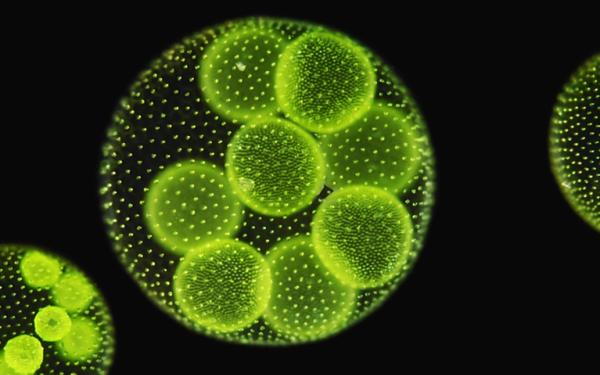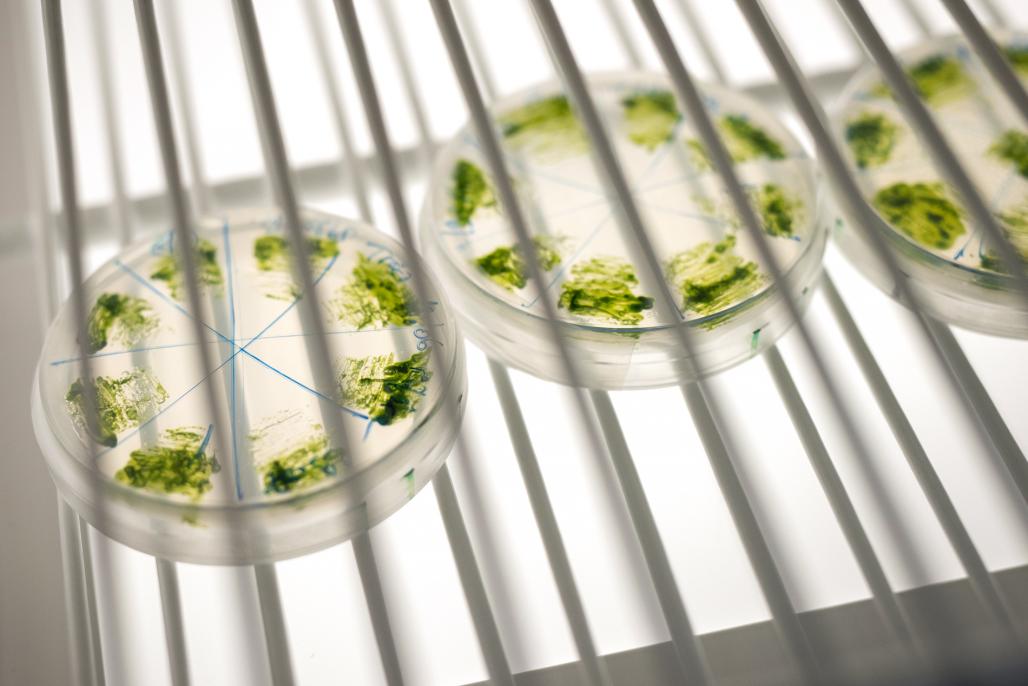
Thekla Ehling für VolkswagenStiftung
Artificial Photosynthesis: Better than green
The microbiologist Tobias Erb has reinvented photosynthesis in the laboratory. Might this one day lead to industrial application – with the beneficial side effect of removing carbon dioxide from the atmosphere? The next steps will be exciting ...
About three billion years ago, nature came up with a pretty good idea. Back then, cyanobacteria developed one of the most important processes ever: photosynthesis. These bacteria succeeded for the very first time in using solar energy to process carbon dioxide from the air into energy-rich sugars.
The photosynthesis is not particularly efficient. It can be done better.
In the course of evolution, photosynthesis was then eventually transferred to plants – and proved itself to be a successful model. Today, all green plants carry out photosynthesis. Without photosynthesis, higher life on earth would be unthinkable because plant biomass is the nutritional basis of animals and humans alike. "From an evolutionary point of view, photosynthesis is an extremely successful biochemical process," says Tobias Erb, "but on the other hand it is not particularly efficient. It can be done better."
This might sound rather presumptuous, photosynthesis being such a well-tried metabolic process. But Tobias Erb, who works as a microbiologist at the Max Planck Institute for Terrestrial Microbiology in Marburg, knows what he is saying. "Evolution is extremely conservative. Once it has produced a good idea, it hardly ever deviates from it." And this is true for photosynthesis. It is still holding on to a protein that is billions of years old and is something like the workhorse of photosynthesis – the enzyme Rubisco. It binds carbon dioxide (CO2) and converts it. But compared with other enzymes, Rubisco is extremely slow. On average, it converts only five to ten CO2 molecules per second. Moreover, Rubisco is not particularly reliable. In about every fifth molecule, it accidentally processes an oxygen molecule instead of carbon dioxide. And that considerably reduces the yield of photosynthesis.
Prototype: high-performance enzyme from purple bacteria
Whereas the plant world has remained with Rubisco, elsewhere in nature an enzyme has developed that can process carbon dioxide about twenty times faster – and makes hardly any mistakes in the process; namely, enoyl-CoA-carboxylase reductase (ECR). This is present, for example, in the purple bacteria found in the oxygen-poor sediments at the bottom of water bodies. Some time ago, Tobias Erb and his team from Marburg came up with an idea for optimizing photosynthesis by virtually reinventing the process. In order to achieve this, they proposed using high-performance enzymes such as ECR obtained from the aforementioned purple bacteria – an artificial photosynthesis in the lab glass. The challenge is that the process involves not only Rubisco but also a good dozen other enzymes that are finely tuned to each other. If just one single enzyme is removed, the whole biochemical process breaks down.
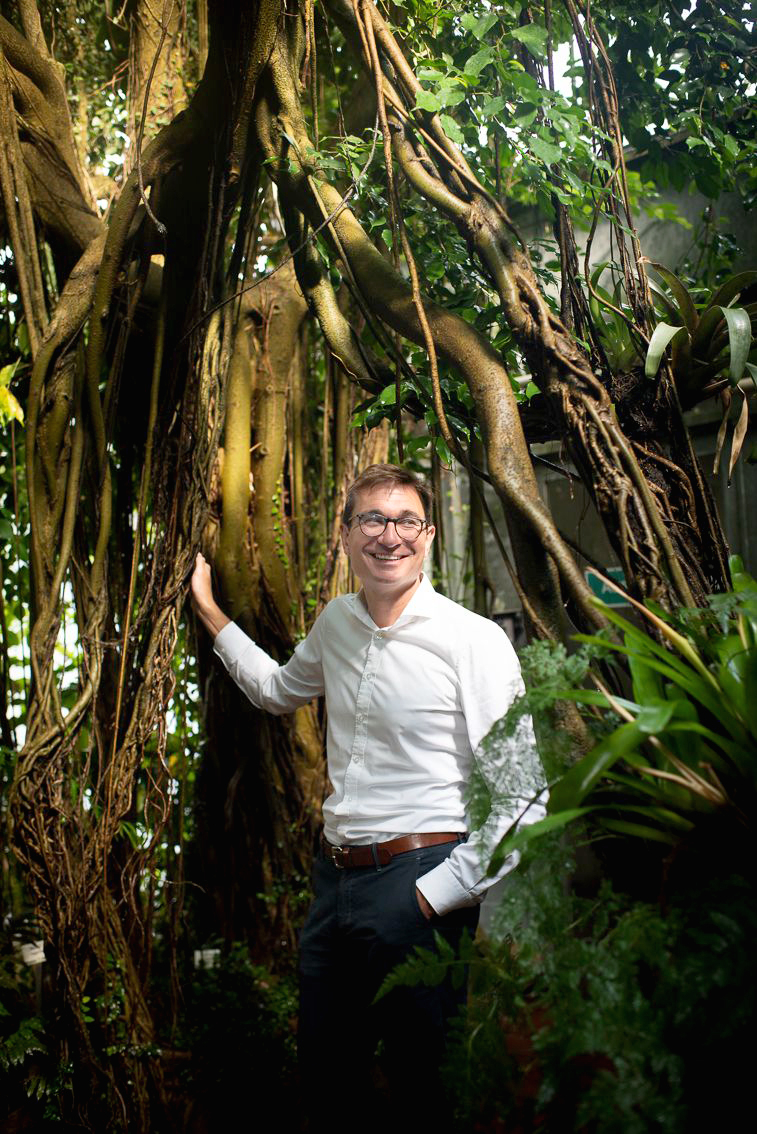
Tobias Erb has reinvented the photosynthesis in his laboratory.
The Marburg researchers were therefore forced to find other enzymes for the interaction with ECR and to assemble a completely new process chain. "Today, there are large databases in which it is possible to search for enzymes with different properties," says Tobias Erb. "After a good two weeks, we found suitable candidates for the 17 enzymes we need for our photosynthesis," including energy-converting proteins originating from fungi, enzymes from the human liver or from the intestinal bacterium Escherichia coli.
Laborious adjustment of the enzymes
But their work had only just begun, because the proteins did not fit together quite so well. Time and again, the process chain came to a standstill. In one case, for example, their experiments led to the generation of toxic by-products that the other enzymes could not tolerate. Tobias Erb and his colleagues therefore had to repeatedly rebuild the enzymes, changing the building blocks of the molecular scaffold and exchanging amino acids. But then it worked: The artificial photosynthesis in the laboratory glass could be started and operated for a certain time.
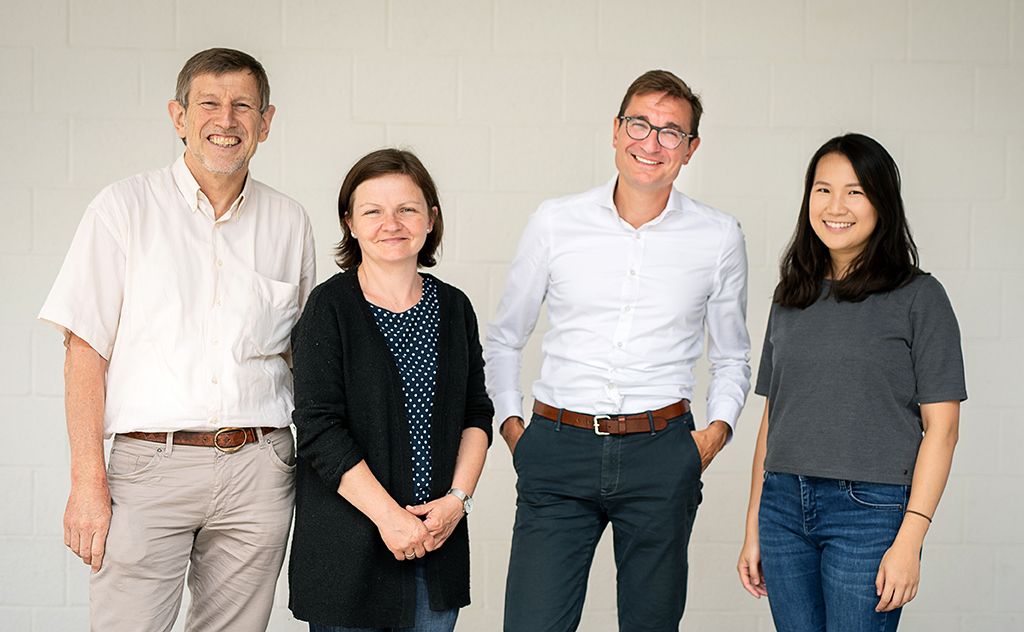
The Marburg team of the BRILIANCE-project (from left): Roland Lill, Magda Rakwalska-Bange, Tobias Erb and Karen Chan.
We envisage using artificial photosynthesis to produce various products.
"Going forward, we envisage using artificial photosynthesis to produce various products from carbon dioxide, such as hydrocarbons for the chemical industry or fuels," says Tobias Erb. Many things are possible, depending on which proteins are combined. And he now wants to go back to nature. Together with his project colleagues in Marburg, Prof. Dr. Roland Lill, and in the USA, Prof. Dr. John Glass, he wants to take artificial photosynthesis from the laboratory glass back into the living cell.
A suitable cell for this already exists. Some time ago, researchers from the J. Craig Venter Institute in Rockville in the US state of Maryland cultivated a greatly simplified cell for biochemical research. Its genetic material and metabolism are reduced to such an extent that the cell is only able to survive and divide. Apart from this, it cannot perform any function at all. In a sense, it is an empty bio-container in which various metabolic processes can be carried out. It is sufficient to introduce into the cell those genes that contain the information for the construction of the required enzymes – and away you go: first with the construction of the enzymes and finally with the corresponding biochemical production processes.
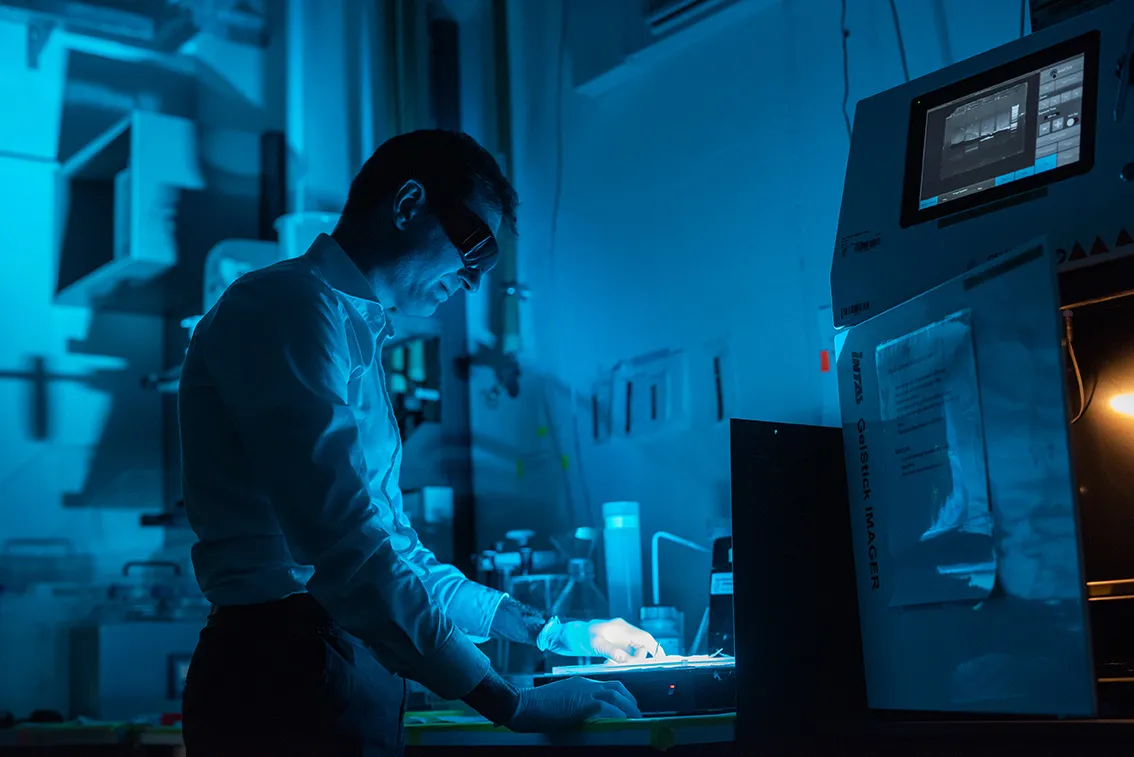
Tobias Erb controls the genes in blue light before they can be used for transfer into the minimal cell.
In research and industry today, many bacteria are used whose genetic material has been modified to carry out certain metabolic processes – for example, in the production of insulin. "But these bacteria have many thousands of genes that in turn contain information for just as many proteins and enzymes, and these would interfere with artificial photosynthesis," says Tobias Erb. The so-called "minimal cell" created by colleagues at the J. Craig Venter Institute is much better. Erb is working closely with them in his current project called "BRILIANCE". This stands for "Bringing inorganic carbon to life with artificial CO2-fixation in a minimal cell", and outlines the project idea quite well – inanimate, inorganic carbon dioxide from the atmosphere is to be transformed into living matter by means of artificial photosynthesis in a minimal cell.
Give evolution a push
But why this leap from the laboratory glass back into the cell? "I want to reinitiate evolution," says Tobias Erb. "We want to get the cell to further develop the new photosynthesis we have designed, to evolutively optimize the process." In the same way as nature, through mutation and selection, trial and error. With the development of artificial photosynthesis in the laboratory glass, Tobias Erb is giving evolution a push, showing it a way out of the Rubisco impasse. Now he wants to use its creativity and observe how it can make the artificial process even better and more efficient.
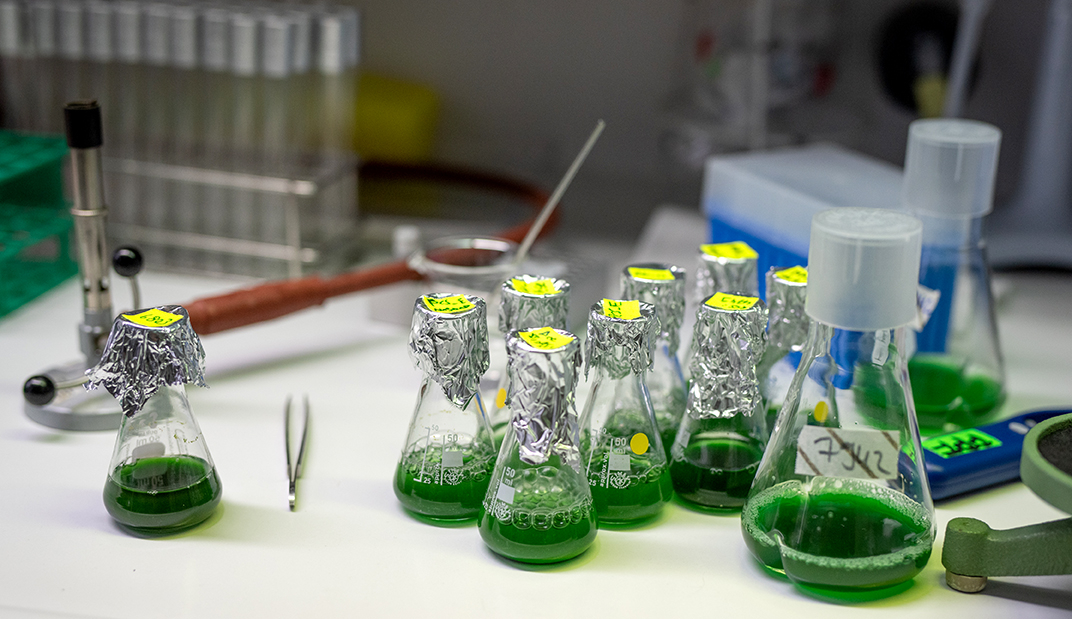
The natural photosynthesis of blue-green algae (cyanobacteria) inspired the research team of Tobias Erb to their research.
We want to get the cell to further develop the new photosynthesis we have designed, to evolutively optimize the process.
In many ways, Tobias Erb crosses the threshold between chemistry and biology, between the natural sciences and the life sciences. His current project fits perfectly into the Foundation’s funding initiative titled "Life? – A Fresh Scientific Approach to the Basic Principles of Life".
All this is still basic research, says Tobias Erb. Nevertheless, its application is already in sight: For example, the efficient production of amino acids or antibiotics using carbon dioxide from the air. If the method can actually be used on an industrial scale in the future, it could also prove to be a welcome measure in the fight against global warming. The greenhouse gas carbon dioxide is removed from the atmosphere and used to manufacture various products. Provided that these products are durable and long-lasting, the concentration of carbon dioxide in the atmosphere could be reduced in the long term. Even though there is still a long way to go before artificial photosynthesis can be used optimally, the prospects are very promising.

